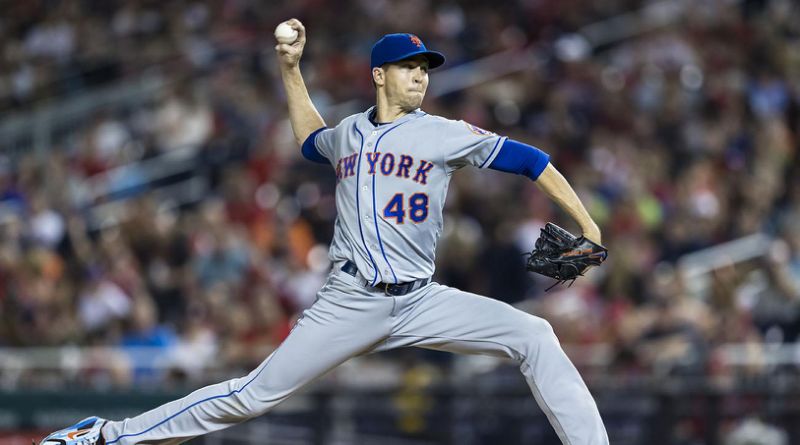A common theme I hear and have experienced with starting pitchers is they want to save their better pitches for later in the game. You’ll often hear pitchers and coaches talk about establishing the fastball early and working in the change up, while saving the breaking ball for later in the game when you really need it. While I do agree being able to establish your fastball early is important, I’m not convinced that saving your best pitches for later in the outing is the right move. Would if by going with this approach my first couple innings I struggle and I end up getting knocked out of the game early? It isn’t always scripted the way you want. You might need a punch out in the first inning and you need to go with your best pitch. Your ability to make adjustment to the game and rather quickly will play a big role in your success. In this post I am going to examine some MLB pitchers and breakdown their percentages as the game goes on and what my take aways are.
J.A. Happ
To start, I want to take a look at J.A. Happ’s and how he attacks hitters. Happ had the highest fastball percentage for qualified starters at 73%! The first thing we are going to look at are his pitch usage percentages.
As you can see he is primarily throwing fastballs and change ups with a slight edge over the slider. As the game goes on the change up stays roughly the same, but the slider usage nearly doubles by the third time through the order. Before I go further, I want to show you his whiff percentages with this same set up.
The whiff percentage on Happ’s pitches are considerably higher the first time through the order with the exception of the four seam, which he throws more than any other pitch. My approach would be to have a more aggressive approach with the off speed early in the game, especially the slider. You can see the change up whiff percentage drops off dramatically after the first time through the order. My thought process would be to increase breaking ball usage as its has a fairly high whiff rate early on and doesn’t have as huge of a drop as the change up does. The change up would be the pitch to reduce usage slightly early to make it more effective later in the game to work off the fastball.
There are obviously an infinite amount of ways to attack hitters, this is just my thought after looking at Happ’s breakdown.
Jacob DeGrom
Jacob DeGrom is without a question one of the best pitchers in the game today, so I thought it would be interesting to breakdown his pitch usage and how he attacks hitters throughout the game. Let’s first take a look at his pitch usage percentages over the course of the game.
DeGrom comes out of the gates relying on the four seam fairly heavily, but also utilizes the slider a good amount. What really stands out is the spike in change up usage after the first time through the order as it more than doubles! Lets now take a look at his whiff percentages as the game goes on.
It’s interesting to see that the change up whiff percentage stays roughly the same, despite the wide variance in usage throughout the game. This tells me that he doesn’t need to worry about showing this pitch too early as it seems to have a lasting effect on hitters throughout the game. The slider on the other hand has a drop in whiffs as usage goes up throughout the game. A strategy for this could be to throw sliders much heavier first time through and then back off on the usage and rely more on the fastball and change up. I’m obviously in no position to tell someone like Jacob DeGrom how to sequence his pitches. These are just my two cent son evaluating his whiffs and usage. Take it how you please.
Carlos Carrasco
The last pitcher I am going to look at is Carlos Carrasco. I’ve always loved watching Carrasco pitch and I think he is a pitcher that doesn’t get talked about enough for how good he has been. Another reason I chose him is he has a much lower fastball usage percentage compared to the average big league starter despite throwing mid 90’s. Carrasco has a very balanced pitch usage scheme with the fastball, change up, and breaking balls. Let’s dive right into it and taker a look at his pitch usage breakdown.
To start we see a consistent trend for pitchers to decrease fastball usage as the game goes on. With Carrasco though there really isn’t a major spike in any of his pitch usages throughout the game. This reveals that he is not afraid to throw off speed right out of the gate, especially the slider. Let’s now take a look at the whiff percentages.
You can see here that his slider whiff percentage takes a gradual decline and the change up stays roughly the same, much like DeGrom. This is an indication to me that the change up is essentially effective throughout the game for him while the early part is where he can really capitalize on the slider, which is probably why he throws it at such a high percentage the first time through the order. The change up will be a weapon later in the game for him, so why not rely more on the slider early? This comes down to knowing your strengths and attacking with those strengths.
Conclusion
There is no question that there are multiple ways to attack a lineup. Understanding your strengths and who you are as a pitcher is a good first step. Don’t assume you should save your best pitch for later in the game because the truth is you might be in trouble before that time comes. Being able to analyze how you actually do against hitters is a huge step for success. A general theme I have seen is that the change up stays fairly constant when it comes to success. My guess would be is it is hard to ever pick up the spin on a good change up compared to a breaking ball. The change up closer replicates the fastball making it a tough to pitch to truly figure out.
Experiment with different plans of attack, analyze it, and keep a record of it. Game plans might change from game to game or you might not have the same feel for a pitch on any given day. Being able to make adjustments and to stay one step ahead of the hitter will set you up for success.
Thank you for reading this and feel free to email me at info@gaynorstrength-pitching.com with any questions.
-Jared

















Have you ever noticed that you throw almost the same speed at 80-90% effort as you do at…